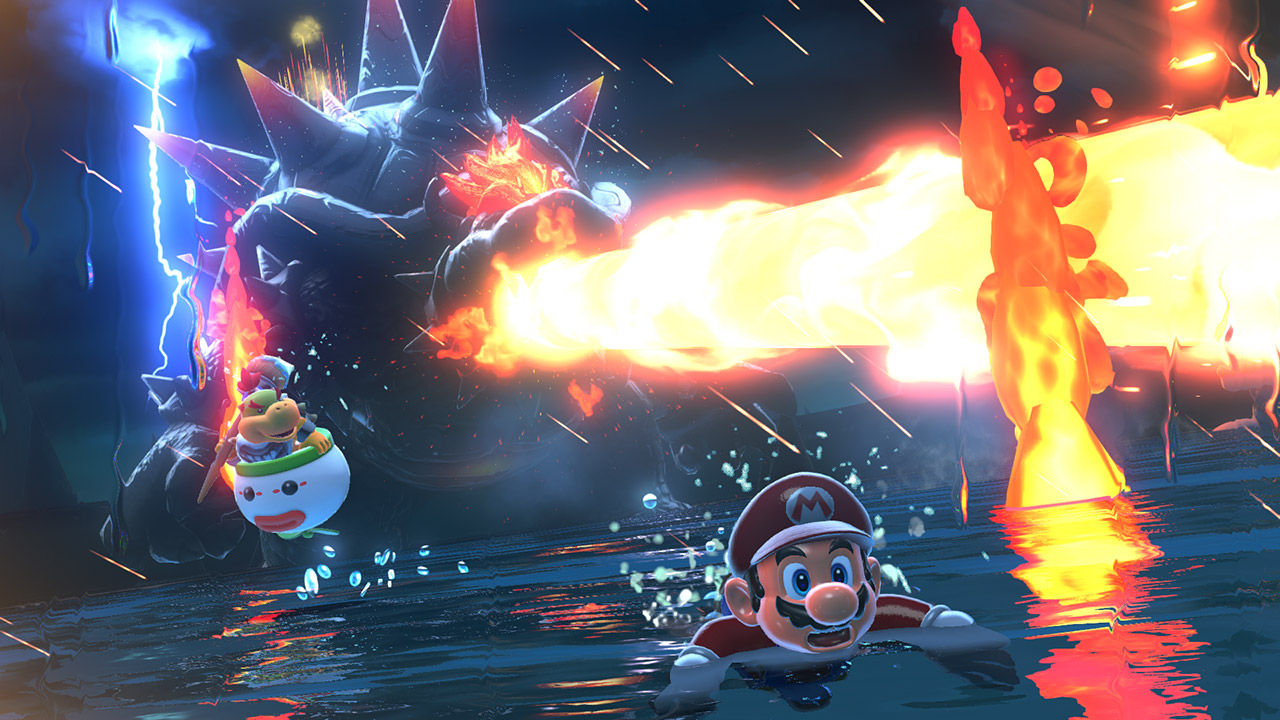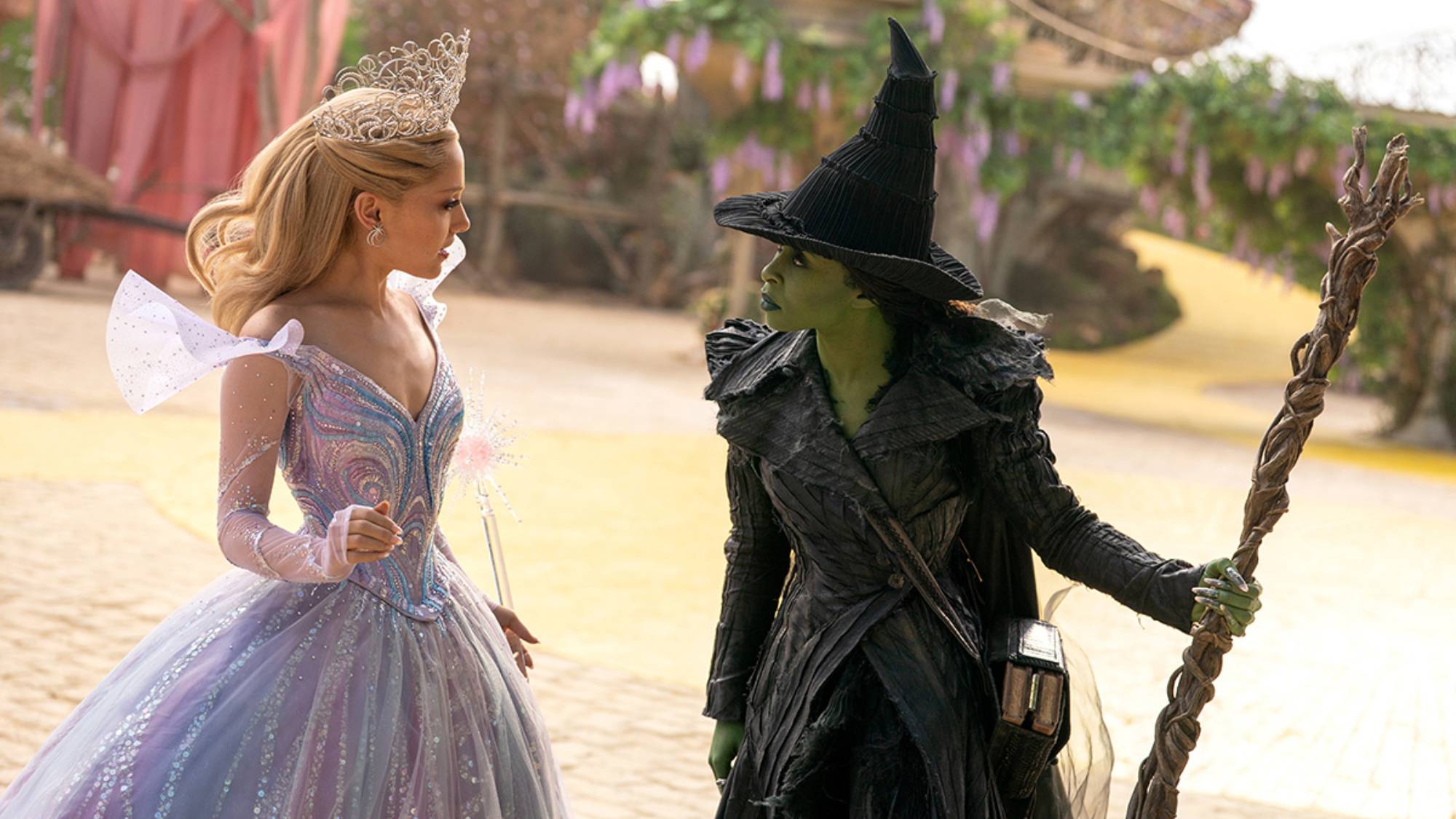
With the release of Super Mario 3D World on Nintendo Switch, there are very few games left from the Wii U’s library that have yet to make the jump to Nintendo’s console-handheld hybrid. But unlike past Wii U ports, Nintendo decided that it needed to beef up the $60 offering by including an extra gameplay expansion titled Bowser’s Fury.
It’s an odd inclusion, considering Bowser’s Fury feels nothing like 3D World. Nintendo, for all intents and purposes, slapped together two very different games into one package. We can only speculate as to why, but one rationale was to give the game a better value offer to attract fans who may already own the game on Wii U. Or, Nintendo may be trying to gauge reaction to Bowser’s Fury's new approach to open design, expanding upon the composition of Super Mario 64, Sunshine, and Odyssey.
- These are the best Nintendo Switch games to buy
- Here’s our Nintendo Switch Lite review
- Plus: Pokémon Diamond and Pearl Remakes coming to Nintendo Switch later this year
Regardless of the reasoning, one thing’s for certain: Bowser’s Fury’s ambition is too much for the Nvidia Tegra X1 chip packed inside the Switch. And I would love to see what a more advanced Nintendo Switch Pro could do with a title like this, even if it's not coming anytime soon.
John Linneman of Digital Foundry has done an excellent technical breakdown of Bowser’s Fury. In his analysis he found the game runs between 720p and 792p, showing that the open-world design is stretching the Switch’s hardware. Because Bowser’s Fury lets Mario run to any play area without being transported to another world, some of the assets must always be present when panning the camera around.
Linneman found graphical effects like sub-pixel shimmering in the distance. It makes pixels look like they’re popping in and out. It’s also likely that the game employs techniques found in 2017’s Super Mario Odyssey to help keep a stable 60 fps, like lowering the framerate of distant objects or replacing 3D models with 2D ones.
Looking at Mario himself, he lacks the smooth roundness you might expect. Because of the lower resolution, you can see “steps” in the pixels, making him look more blocky. While there’s probably a layer of antialiasing to help smooth over any jagged edges, a 720p image blown up on a 4K display will present these types of artifacts.
The weaker hardware means that Nintendo has to use older types of effects, ones that were present during the PS3 generation. While I’m not a game developer and definitely not an expert in computer graphics, the basic reflection mapping present on Mario’s cap and clothing when he gets wet lacks the realism of more modern games. It looks to be a similar effect used in the original Uncharted: Drake’s Fortune on the PS3. Whenever Nathan Drake would jump into a pool of water, his clothes had an almost plastic-looking veneer to simulate what damp cloth might look like. It was impressive for 2007, but is lacking when compared to modern techniques.
Get instant access to breaking news, the hottest reviews, great deals and helpful tips.
Granted, in a more cartoony game like Bowser’s Fury, it’s nice to have that detail to begin with. And it’s far less jarring given the game’s artstyle. But it points to the techniques Nintendo’s artists and engineers have to fall back on with the tools at their disposal.
Because of the lower resolution, you can see “steps” in the pixels, making Mario look more blocky.
That’s not to say the game is ugly by any means. It’s still a fancifully detailed game, with plenty of objects to play with, colorful characters and kittens, and subtle artistic cues that prove why Nintendo remains at the top of its game. Yet, for the videophile that’s rocking an LG OLED TV and is becoming accustomed to playing games at 4K resolutions, I can’t help but wonder what Bowser’s Fury could look like if it were running on more powerful hardware.
For context, a 720p image is a bit over 900,000 pixels. A full 1080p image is over 2 million. Having to stretch 900,000 pixels over a 4K display with over 8.2 million can only look so good.
Still, I can’t help but imagine what Bowser’s Fury might look like if running on hardware half as powerful as the PS5. A 1440p image with checkerboard rendering would look brilliant on a 4K display. Luckily, with the help of emulation, we can see what a 4K modern Mario game could look like. Using a Wii U emulator, people have been able to play Super Mario 3D World on PC in 4K. While the emulation isn’t perfect, and there are framerate drops, the sharpness and fidelity is considerably cleaner.
While Mario games tend to use simple bright colors, given Nintendo’s imaginative design, it’s likely artists would have found some benefit with HDR implementation. Currently, the Switch outputs 8-bit color depth, meaning it can produce 16 million colors. HDR is 10-bit, which bumps up the available color count to over 2 billion. This translates to greater color depth and detail, giving images a more realistic gradation and translucency. For lack of a better term, the image seems to “pop.” In my opinion, seeing Mario in HDR would be visually stunning.
At the moment, it seems that Nintendo has no plans to release a Switch Pro any time soon. The system continues to remain in high demand, and with component shortages due to the Covid-19 pandemic, placing an order with manufacturers will be more expensive and difficult with multiple companies competing for parts.
While a Switch Pro remains a fleeting hope, wanting to see Nintendo software pushed to its graphical potential keeps that hope alive.

Imad is currently Senior Google and Internet Culture reporter for CNET, but until recently was News Editor at Tom's Guide. Hailing from Texas, Imad started his journalism career in 2013 and has amassed bylines with the New York Times, the Washington Post, ESPN, Wired and Men's Health Magazine, among others. Outside of work, you can find him sitting blankly in front of a Word document trying desperately to write the first pages of a new book.
